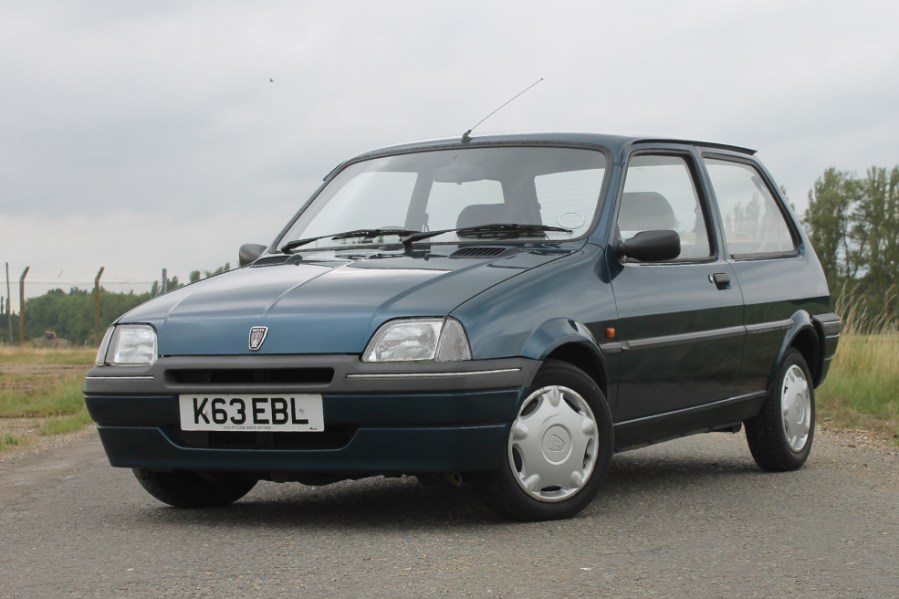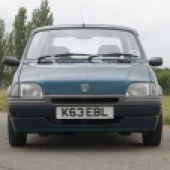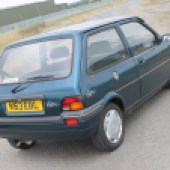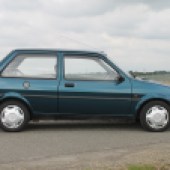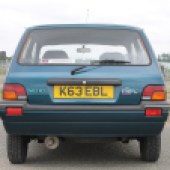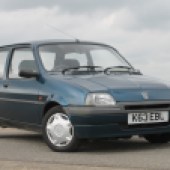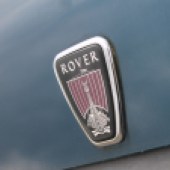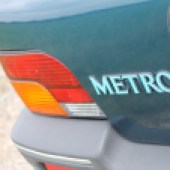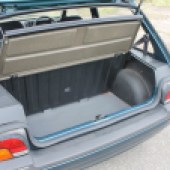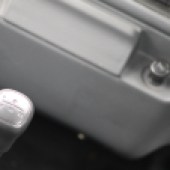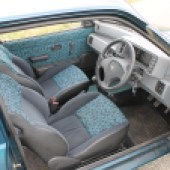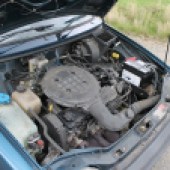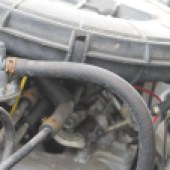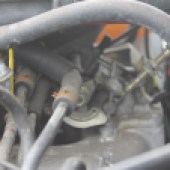The Rover Metro and its 100 successor saw an aging supermini transformed into a competitive offering for the 1990s
Images: Jack Grover
A decade after the launch of the original Austin Metro came a reinvention of the bestselling supermini, with crucial engineering changes seeing the old A-series engine being usurped by the thoroughly modern K-series, enabling the new Rover Metro to be offered with a five-speed gearbox. Front-end changes to accommodate the K-series also allowed the front axle to be moved forwards, improving front legroom and removing the old Mini-like steering wheel angle.
Hydragas suspension remained for the Rover Metro, albeit now interconnected front-to-rear in order to improve handling and reduce pitch. The end result was class-leading ride quality combined with a highly entertaining driving style.
The new car launched in May 1990 offered with the 1113cc (60bhp) engine as the 1.1 C, 1.1 L and 1.1 S, while the 1396cc unit (in eight-valve 76bhp guise) featured in the 1.4 GTa and 1.4 SL. The 16-valve, 95bhp unit was reserved for the 1.4 GTi. The 1.1s used a standard four-speed gearbox, while 1.4s came with five gears. A CVT automatic option was added to the 1.4 in December ’92, as was a diesel using PSA’s 1.4-litre, 53bhp TUD unit. The now-rare Metro Cabriolet version arrived in 1994.
December of that year saw the Metro name killed off in favour of Rover 100, for which there was also a front-end facelift with reshaped headlights and a Rover-like grille. The diesel was upgraded to a 1527cc PSA unit, while multi-point injection took the range-topping GTa to 103bhp. There was no hiding the age of the smallest Rover’s basic design, however, and in December 1997 it quietly bowed out.
With early Metros seeing an uplift in values over recent years, these later Rover versions offer the best value. Inevitably, however, there are pitfalls for the unwary buyer.
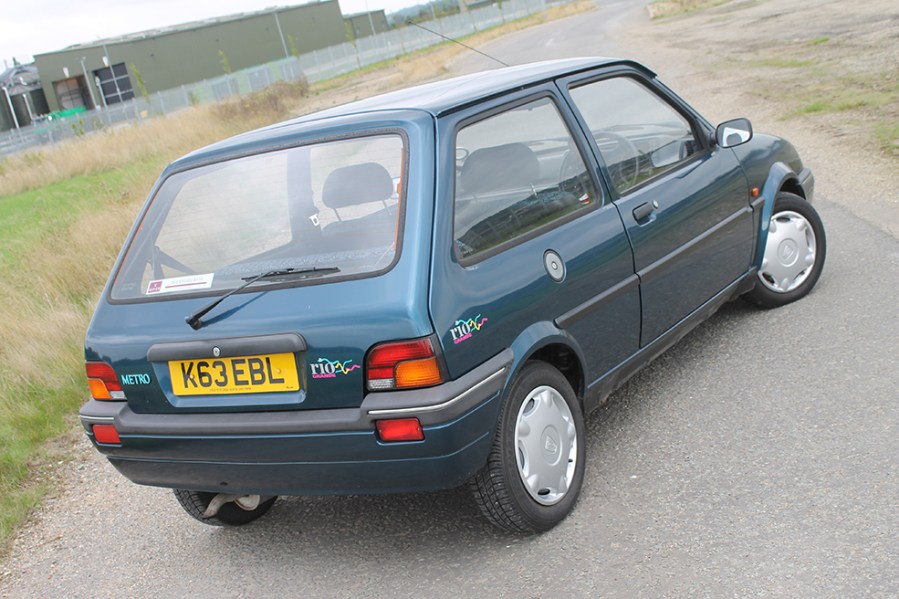
Bodywork
As with its Austin-badged predecessor, the smallest Rover’s major enemy is rust. The rear wheelarches are particularly vulnerable, and even at a young age many examples were showing signs of bubbling paintwork here as rot forced its way through from behind. You’ll be lucky to find a Metro/100 that hasn’t had rear arch repairs, so check for signs of filler and mismatched paintwork.
While rusty rear arches aren’t pretty, they’re usually not an MoT fail. Rotten sills are, however, and the Metro/100’s outer sills are particularly prone to corrosion. Be on the look-out for signs of poor quality welding, patch repairs and rot-hiding underseal; and the same applies to the floorpans, particularly near the corners front and rear. Check for rot around all the suspension mounts, as well as the radiator crossmember.
All outer panels can attract corrosion, so check the front wings (particularly the rear of each wing, top to bottom) for bubbling, holes and and/or filler, and carry out the same checks along the bottom of each door (three- and five-door versions of the Metro/100 were available from launch). Rust around the fuel filler cap (located high up on the offside rear quarter panel) isn’t unheard of, and the bottom edge of the tailgate and leading edge of the bonnet should also be checked.
The good news is that some body parts are still available from stock. Rimmer Bros’ range of Rover Metro/100 panels includes new doors and doors skins (the latter from less than £22), Metro bonnets (£120), plus all the essential crossmembers and subframes. Reproduction sills are available from general suppliers; and while new front wings are getting scarce, affordable used examples can be found online.

Engine and transmission
The Metro was only the second production model to use the new K-series engine following its debut in the R8-generation Rover 200. It’s reliable enough when maintained correctly but famously has problems when neglected or its coolant levels aren’t checked regularly. Oil leaks are common, and the K-series has a reputation for head gasket failure – although this seems less of an issue with the 1.1-litre version.
Head gasket problems can occur even on a perfectly maintained example, so make sure you check for tell-tale signs of oil in the coolant and vice-versa. For a long-term solution, ensure that any replacement head gasket is of the upgraded multi-layer variety. Performance versions of the Metro/100 are potentially more troublesome, particularly if previous owners have over-revved the engine whilst still cold.
Buying a car with a full history is advisable. Check for regular servicing, plus evidence of a cambelt change at 60,000 miles or within the last five years. Diesel versions of the Metro/100 are getting rare but are worth seeking out for the impressive reliability of the PSA-sourced engine.
The manual gearboxes are of the R84/R85 variety. They’re reliable in use, although high-mileage examples can suffer from noise from the input shaft bearing and can crunch when you’re selecting reverse; early versions also leaked oil through the breather, though this is fixed by fitting a later breather. Make sure that the gears select easily, and check for any signs of clutch slip when accelerating under load or on an incline. Higher-powered versions put more strain on their transmission, so be extra vigilant if you’re buying a GTi, GTa and so on.
You’d need to be brave to consider one of the CVT ‘gearless’ automatics, as parts are now scarce and most garages won’t want to work on these gearboxes.

Suspension, steering and brakes
Although the Rover Metro retained the well-proven Hydragas suspension system that had been such a success since the old British Leyland days, it was substantially updated by Alex Moulton with outstanding results in terms of its handling and ride quality combination. It still impresses now, although it needs to be in a healthy state. You should make sure the car is ‘level’ when stationary, with no sign of its being down on one side; if it is (particularly at the front), it needs at best a ‘pump-up’ or at worst a new Hydragas displacer. If it’s in need of attention, speak to Hydragas & Hydrolastic Service about their nationwide mobile repairs.
You should check the rear radius arms for play, as this is an MoT failure. On neglected cars, the signs will be obvious thanks to the negative camber of the rear wheels; on extreme examples, you’re looking at complete replacement, which obviously comes at a cost. And at the front, the top arms need careful examination as the grease nipples are often neglected during servicing and can cause premature wear.
The steering set-up isn’t complicated, and there’s no power assistance to worry about, so you’re basically carrying out the usual checks for wear and tear, including damaged or worn gaiters. The steering should still feel sharp and precise, so be suspicious of any Metro/100 that seems vague or ‘sloppy’.
The brakes are also straightforward in their design. Keep an eye out for worn pads, scored or damaged discs, worn hoses and so on. The manual handbrake adjusters have a tendency to stick, so watch out for this.
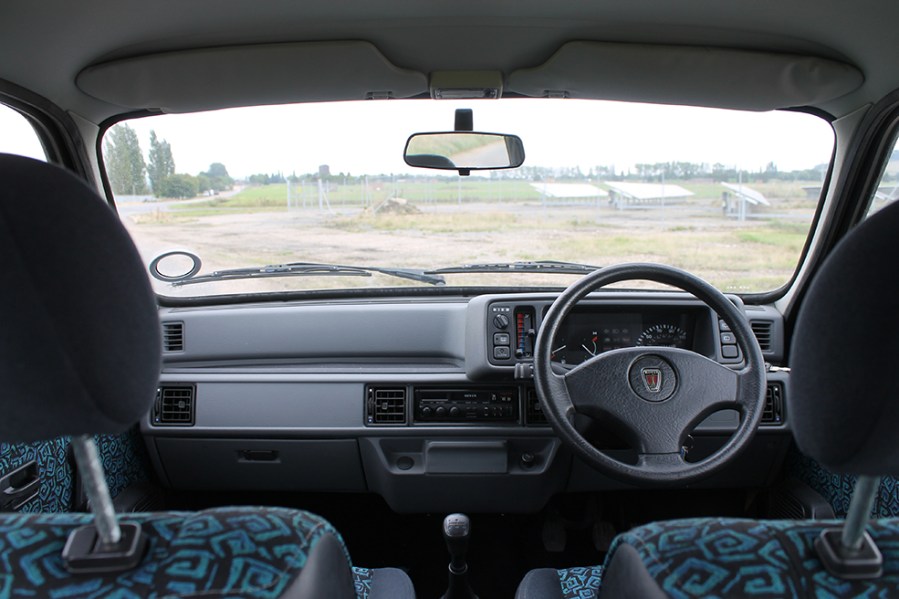
Interior, trim and electrics
Rover Metro/100 interiors are generally hard-wearing. Trim levels vary greatly, from the simple approach of a 1.1 C through to the relative luxury of a late-model GSi or GTa. The choice of materials was pleasing, with the upholstery fabric being decent enough quality to still look good now. Any wear to the front seats is likely to be to the outer side bolster on each side, so keep an eye out for this; and make sure you check for signs of water ingress (damp carpets, stained trim and so on), which can happen via a leaky sunroof or holes caused by corrosion.
Make sure the electrics are functioning as they should, including the central locking and electric windows fitted to higher-spec cars. If you’re buying a later-model Rover Metro, check that the remote key fob is still working; if not, or if it’s missing, a previous owner will probably have disabled the immobiliser ECU that’s hidden away under the dashboard. A Rover 100 should come with a four-digit immobiliser code that allows the alarm and immobiliser to be deactivated if the remote key fob fails. Engine ECU faults on all models are also fairly common.
Rover Metro: our verdict
Representing far more than just a facelift in 1990, the Rover Metro was re-engineered to such an extent that it was essentially a new car, albeit saddled with the old Austin Metro’s diminutive proportions at a time when superminis were growing in size. Its tiny stature gives it added appeal today, however, with the Rover Metro/100 arguably being a worthy cut-price alternative to a classic Mini. It’s got the same sharp handling and fun appeal, but with added refinement, performance and the kind of ride quality that still impresses.
Mention the Rover 100 to pub friends and they’re sure to recall its disastrous Euro NCAP crash test results of 1997, when it was the only car awarded just one out of five stars. But hey, this was a model originally designed in the 1970s, launched in the 1980s and re-engineered for the 1990s, so it was always going to struggle against newer designs. Looking back, we reckon the Rover Metro represented one of the most successful automotive updates of the last 30 years – no matter what Alan Partridge might say to the contrary.
As values of earlier Austin and MG Metros have increased substantially and with immaculate examples now highly sought after, the Rover Metro is perhaps where the clever money should go. There’s no arguing with the value on offer despite a steady rise over the last five years.
You can still pick up a project car for just a few hundred pounds, but you’ll end up spending more on its restoration than the end result is ever likely to be worth. Better instead to spend £1500–2500 on a decent ‘regular’ version of the Metro/100, with recent auction results showing several low-mileage examples selling at the upper end of that price range. Around £3000 will bring you one that’s near immaculate, although sporting versions do fetch more – including the £4500 achieved for a 1998-registered 114 GTa with just 30,000 miles under its wheels. A rare Cabriolet in the same condition is perhaps worth more, although the GTa and Metro GTi remain most sought after among enthusiasts.
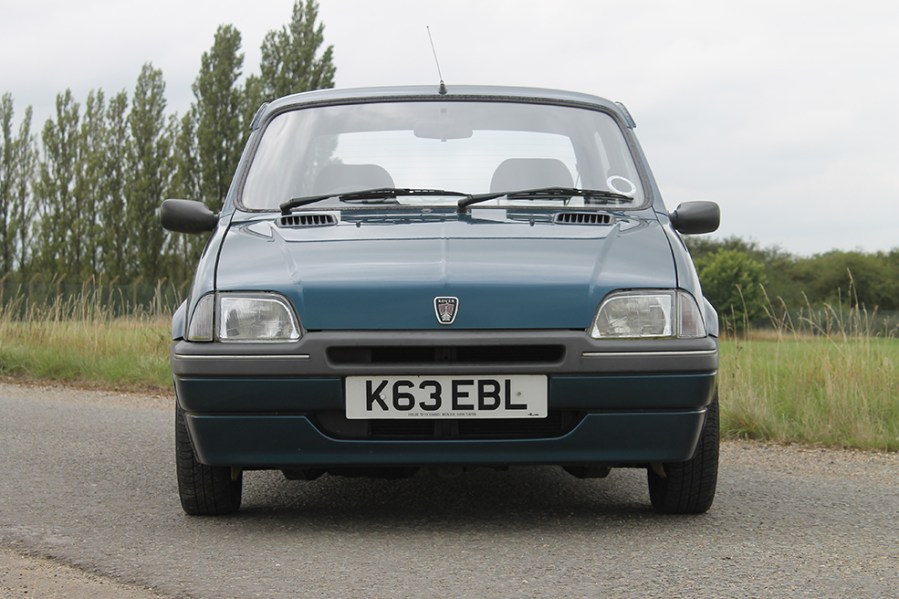
Rover Metro timeline
1990
Major Metro facelift brings fresher styling, Rover badging and K-series engines
1992
Metro Automatic (using Van Doorne CVT ’box) arrives, plus 1.4-litre diesel option
1994
Metro Cabriolet launches, available only in 1.4 16v guise
1995
Metro rebadged as Rover 100, with minor styling changes and new trim levels
1995
GTa gets multi-point fuel injection, diesel gets 1.5-litre upgrade
1997
Production of Rover 100 ceases, bring to an end the 17-year Metro story

